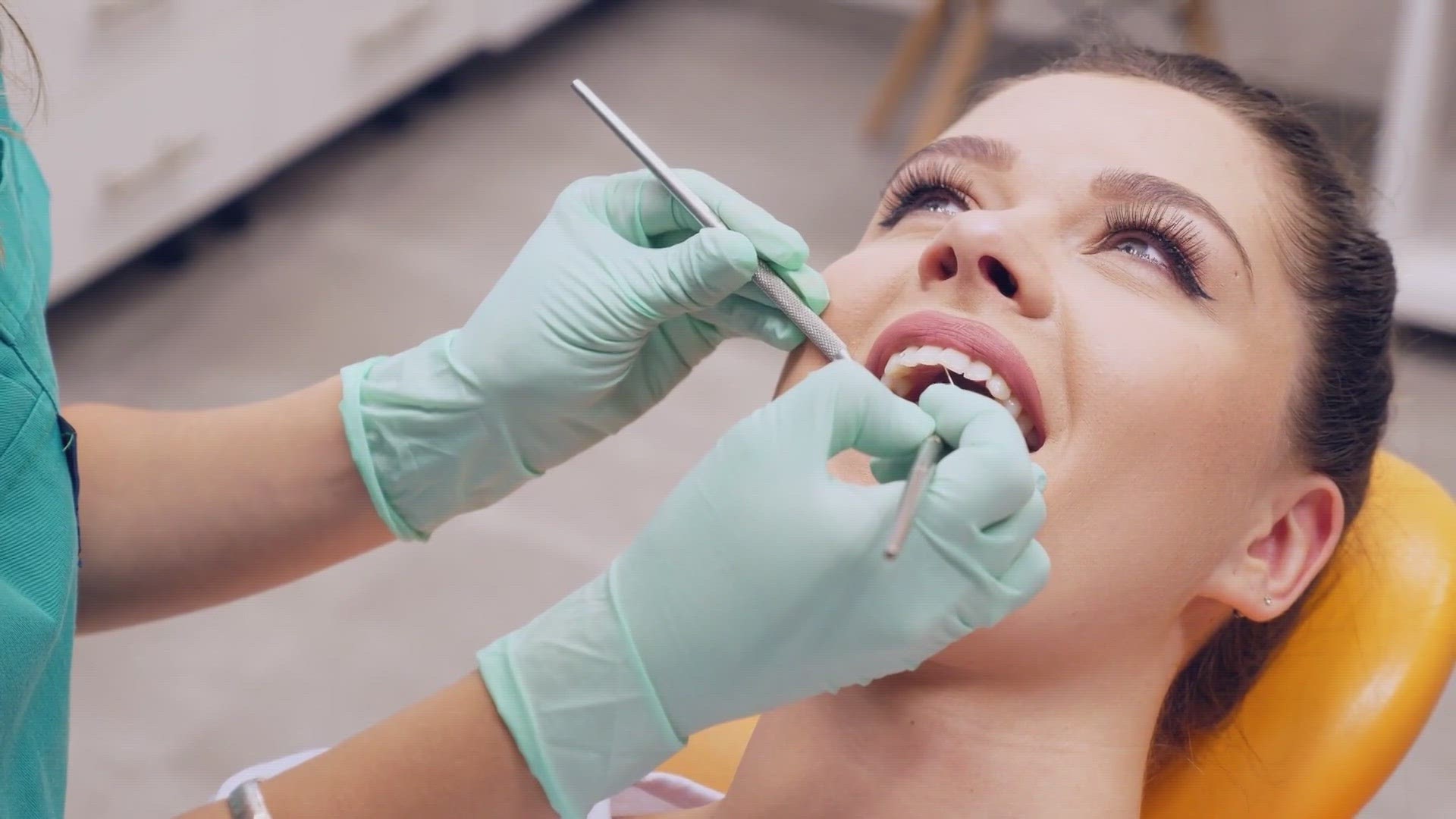CLEVELAND — Since the mid 2000s, the American Cancer Society says cases of oral, head and neck cancers have risen 1% each year. The increase is thought to be linked to the Human Papiloma Virus (HPV).
It's not uncommon for people to get mouth ulcers or sores, but discovering whether the lesion is cancer is not easy.
Biopsies are expensive and invasive and can come with their own set of complications. It's also difficult if not impossible to do a repeat screening on the same lesion.
But what if a simple brush could collect the answers?
Researchers at Case Western Reserve University School of Dental Medicine, discovered a noninvasive, low-cost test to not only detect oral cancer, but tell who needs a biopsy.
Their findings, published online March 4 in the journal Cell Reports Medicine, are based on a scoring system linked to the levels of two proteins in cells brushed from suspicious oral lesions.
They studied 100 patients of dental clinics and in the ear, nose and throat department at University Hospitals, as well as sites in University of Cincinnati Medical Center and the West Virginia University School of Dentistry in Morgantown, WV.
They found a protein in the lesion that's expressed at high levels in early-stage oral cancer.
"When we first discovered hBD-3, we saw it acted as a ‘good guy,’ involved in wound-healing and killing microbes," said Aaron Weinberg, DMD, PhD who is chair of the Department of Biological Sciences at the Case Western Reserve School of Dental Medicine and the study’s lead researcher. “When we found it was regulated the same way certain cells grow uncontrollably, we started studying hBD-3 in the context of oral cancer.
“Imagine our surprise when this Dr. Jekyll turned out to be Mr. Hyde,” he said. “We found it was not only promoting tumor growth but was overexpressed in the early stages of the disease, while another member, hBD-2, wasn’t changing. This difference in levels of expression of the two proteins compared to the opposite side in the same patient led us to examine the BDI’s ability to distinguish cancer from benign lesions.”
The team worked with a company in the Netherlands to create a plastic brush to collect the cells. Now the plan is to expand the study from coast to coast and in other countries to get a wider demographic of patients and to make sure the findings are similar to the near 100% sensitivity the original findings revealed.
Head and neck cancer (HNC), of which oral cancer is about 90%, is the seventh-most prevalent malignancy in the world, and developing countries are witnessing a rise in its incidence. HNC makes up about 5% of all cancers worldwide and 3% of all malignancies in the United States, according to the National Institutes of Health. There are about 640,000 cases of HNC per year, resulting in about 350,000 deaths worldwide, mainly in socioeconomically disadvantaged populations and underserved communities.
Dr. Weinberg said the study’s lab-based approach, which is now patented, can reduce biopsies in primary care clinics by 95% because it can tell clinicians who actually needs a biopsy, and the test can also be used in developing countries where oral cancer is rampant and pathology services are questionable or lacking.

